Gigabit Ethernet switches are available in many ports. Individual users can have four to eight ports, while businesses can have them in multiple ports.
Ethernet technology is commonly used in wired Local Area Networks. Several components make up the Ethernet technology. Among the elements is a Gigabit Ethernet.
A Gigabit Ethernet port is like any other port. The difference is that it operates using the Ethernet frame format and protocol and has a data transmission rate of one Gigabit per second.
Thus, many enterprise networks prefer to have this port to improve their network connectivity. The most common Gigabit Ethernet is 1000BASE- T. Its Ethernet standard is IEEE 802.3 ab.
So, today, I will explain everything about the Gigabit Ethernet port.
What Is a Gigabit Ethernet Port?
Gigabit Ethernet is the latest high-speed Ethernet technology in recent years. It works efficiently with an operating rate of 1 billion bits per second.
Besides this high network speed, it also maintains compatibility with the 10Mbps base. It can also be used while operating 100 Mbps Ethernet equipment.
Gigabit Ethernet was initially famous for high-capacity network links. For example, the campus network. Apple’s Power Mac G4 and PowerBook G4 adopted the technology in 2000.
Thus, many PCs have deployed Gigabit technology all through the 21st century.
How Fast Is a Gigabit Ethernet Port in Practice?
Most devices cannot transmit data at the full 1 Gbps rate. This is due to re-transmissions and network protocol overhead.
Transient failures and collisions heavily contribute to these factors. Recent studies reveal that the average connection speed is 900 Mbps. However, it is not standard for all network devices.
This value may vary due to numerous internal factors. Regarding Gigabit Ethernet speed, a disk drive may also alter the rate. Besides, bandwidth also limits the Gigabit Ethernet port’s speed.
Home routers have Gigabit Ethernet ports. CPUs attached to the routers are responsible for handling the load. The load helps support incoming or outgoing data.
The data is transmitted at total rates on the network connections. But, many CPUs fail to hold the load. It leads to a reduction in the Gigabit Ethernet transmission speed.
How Is Gigabit Ethernet Port Used With PoE?
It is essential to know PoE to understand how Gigabit and PoE are used. You will notice that data transmission on PoE is impressive.
PoE uses cables such as Cat5 and Cat6 to transmit data. These cables are so durable that they do not need replacement for years.
It has always been cheaper to upgrade technology than build another one. You will understand why Ethernet upgraded to Gigabit Ethernet with that in mind.
The Gigabit Ethernet is an upgrade from Fast Ethernet. As seen earlier, it transmits data at 1 gigabit per second. In simpler terms, it does so at 1 billion bits per second.
It is faster than the previous Ethernet version. Yet, Gigabit Ethernet still uses the same twisted copper wires. It is also suitable for Cat5 and Cat6 cables. Of course, it can only occur if it is appropriately configured.
The power used with Gigabit Ethernet comes from four pairs or eight wires in the cables. Now, let me come to the primary question: How does Gigabit Ethernet work with PoE?
We all know that PoE stands for Power over Ethernet. It transmits power and data to devices. In doing so, it uses the same cat5 and cat6 cables.
The traditional Fast Ethernet uses two pairs out of four. At the same time, PoE uses the remaining two lines for power transmission.
Benefits of Using a Gigabit Ethernet Port
If your device comes with a Gigabit Ethernet port, you can enjoy the below benefits.
Easy and Fast Storing of Your Data
Computers use a lot of data today. This is common in the corporate world and campus environments.
High-resolution images, videos, and intense applications use a massive amount of data, which can lead to slow traffic in an organization.
Data storage and transmission are difficult when PCs share bandwidth in a server cluster. Thus, having a Gigabit Ethernet port can help prevent data bottlenecks and ensure that everything runs fast and smoothly in an organization.
It Can Improve Your Server Capabilities
A Gigabit Ethernet port is beneficial when creating a server network. You can combine several Gigabit Ethernet ports.
Moreover, combining the ports can increase connection speed. Of course, all this can be accomplished on a single server.
It Offers an Exceptional Speed
As mentioned earlier, Gigabit Ethernet is superfast. It transmits data at 1000 Mbps, a massive upgrade from Fast Ethernet.
The Fast Ethernet can transfer data at 100 Mbps. With Gigabit, you can enjoy fast and reliable data connections. Thus, having a Gigabit port on your device is essential to enjoy exceptional speed.
You can follow some of my suggestions in the post –How Do I Get Full Gigabit Speed?
No Crashed Connections
Any organization dreads a slow and crashing connection. It is because it can lead to losses. That is in terms of finances and time.
A Gigabit Ethernet can help you get rid of all such issues. They provide a reliably fast backbone. Speed is essential when communicating with clients and employees.
Gigabit Ethernet ensures that each employee in an organization constantly connects with co-employees. Deploying a Gigabit Ethernet reduces traffic jams in the system.
Moreover, it eliminates crashing connections, ensuring a smooth network connection in your organization.
Disadvantages of Using a Gigabit Ethernet Port
Like any other device, a Gigabit Ethernet port can have its share of disadvantages.
1. Gigabit Ethernet needs a deterministic service. Because of this, it is unable to set packet priority.
2. It does not support full-duplex data communication mode. It is shared with the 100 Base-T4.
3. It also does not support a traffic-intensive application. The rise in traffic on Ethernet reduces its efficiency.
4. It cannot set priority packets, making Ethernet useless in a client-server architecture.
5. Moreover, it does not support troubleshooting, making it difficult to determine the cause of the problem. This applies to both the cable and nodes.
Gigabit Ethernet vs. Fast Ethernet Port
Gigabit and Fast Ethernet have pros and cons. Any organization should try to determine which is best for it.
If it is a small organization, I would suggest Fast Ethernet. It is cheaper than Gigabit Ethernet, but small enterprises can still incorporate Gigabit Ethernet.
It may be helpful for IP surveillance cameras and high-quality video streaming. Gigabit Ethernet covers relatively longer distances than Fast Ethernet and does not require specifically designed network devices other than an industrial PoE switch.
Speed is also an essential factor when choosing the correct data protocol. Of course, Gigabit Ethernet is much faster than fast Ethernet.
What’s more, it also has less cabling than Fast Ethernet. Moreover, it has a high bandwidth potential, which allows it to manage virtual networks easily. These small details help when choosing between Gigabit and Fast Ethernet.
If you want to enjoy full gigabit speed, I suggest you get a 12-port or 14-port Gigabit Managed PoE switch.
Final Thoughts!
That’s all about the Gigabit Ethernet port. Choosing between Gigabit and Fast Ethernet can be challenging.
But, an organization will still need an Ethernet data protocol. Thus, every business has to understand what works best for them.
Choose something that will serve you well in the long run. Going cheap shouldn’t be an option, as in most cases, cheap can turn out to be expensive. Thus, I recommend a Gigabit Ethernet.

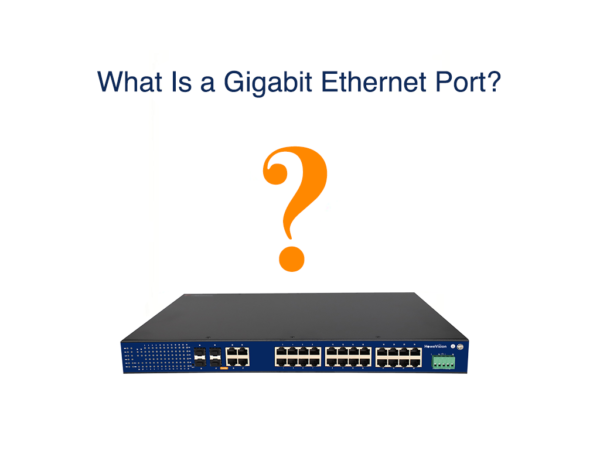
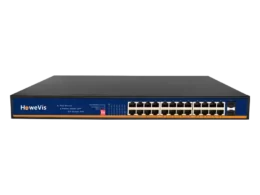
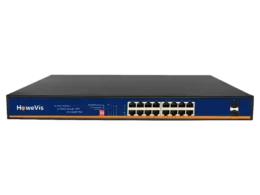

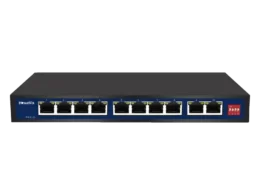
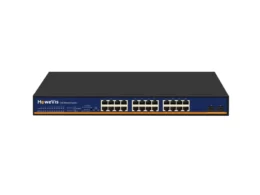
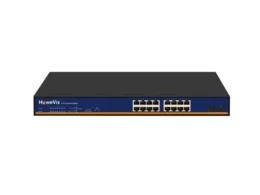
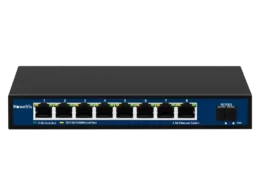
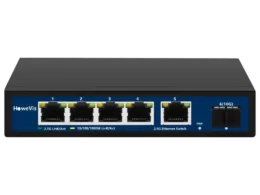



1 thought on “What Is a Gigabit Ethernet Port?”
Pingback: Can Cat5e handle 10GB? - Professional Industrial PoE Switch Manufacturer
Comments are closed.